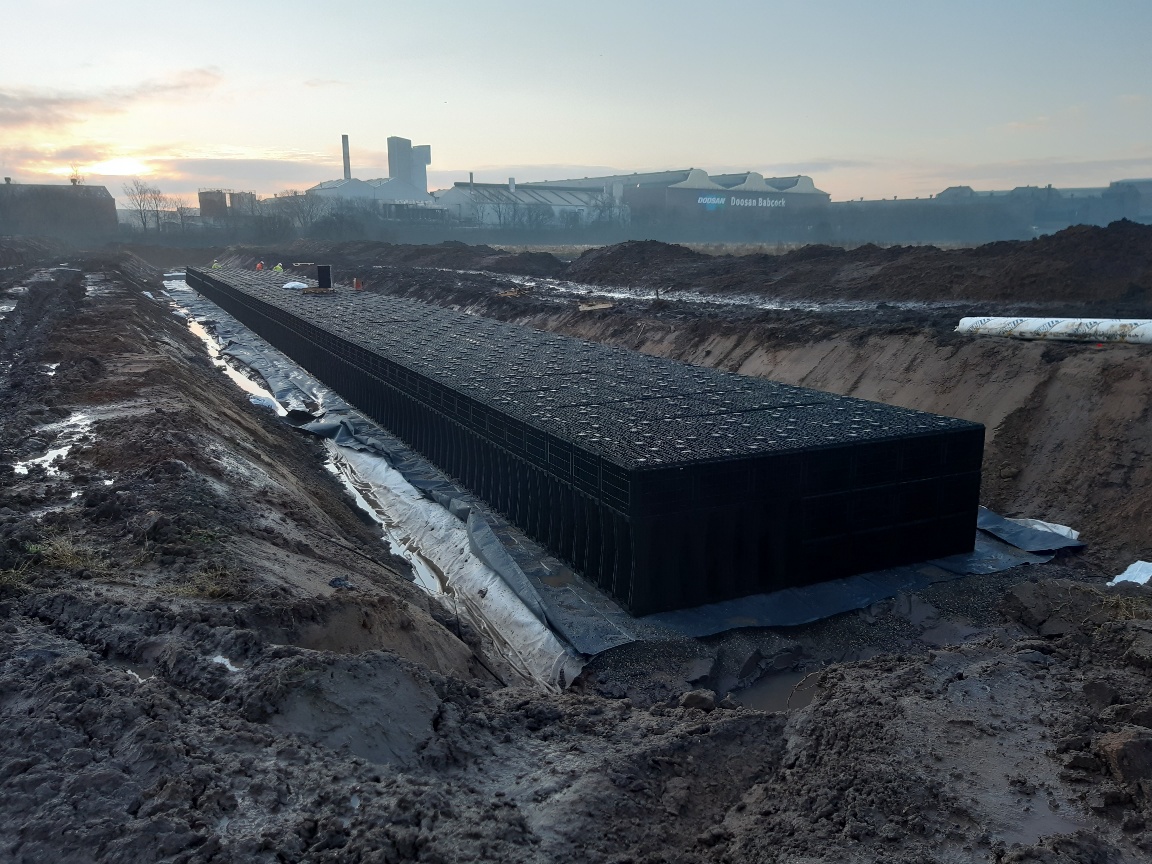Glasgow airport investment area - BRE Group
Glasgow Airport investment area leads in sustainable infrastructure
Overview
Scotland’s growing manufacturing district gained new transport and connectivity as part of this innovative project, with the aim of bringing new jobs and opportunities to the area. The council created new sustainable infrastructure with a focus on maximising efficiency and reducing waste. It achieved a BREEAM Infrastructure rating of Excellent.
About
Renfrewshire Council is the council for the western region of Scotland which includes Glasgow.
Background
The Glasgow Airport investment area (GAIA) project creates the connections and infrastructure that underpin the development of Scotland’s manufacturing innovation district. Led by Renfrewshire Council, it includes new roads, bridges, cycling routes and pedestrian footpaths. These will connect the the Advanced Manufacturing Innovation District Scotland (AMIDS) and the nearby Westway and Inchinnan Business Parks.
The £39.1 million project was funded by the Glasgow City Region City Deal, one of the largest City Deals in the UK. The support for AMIDS brought new employers, jobs and opportunities to the region and ensured the continued success of Glasgow Airport.
Challenges
The aim of the project was to create sustainable infrastructure for the area, to boost connectivity and set GAIA up for economic success.
Renfrewshire Council used the BREEAM Infrastructure certification to assess the efficiency of this project. Throughout the process it had a greater focus on opportunities to minimise waste and maximise resource efficiency than there would likely have otherwise been.
The project dealt with various challenges throughout construction, including some very poor ground conditions under the footprint of the new road. The client solved this using of vertical drains, observation of settlement periods and the use of geogrids to achieve a solid foundation.

Solutions
Walking and cycle routes
Abbotsinch Road has been realigned, upgraded, and extended, with accompanying pedestrian and cycle facilities to create a route through Netherton Campus, the central site of the manufacturing district.
The project created a two-lane bridge for pedestrians, cyclists and commercial traffic across the White Cart River from an approach road off Arran Avenue to Wright Street. The bridge includes a connection into Wright Street business premises, with no through route along Wright Street for vehicles. This reduces the impact of traffic on residential areas and the bridge also connects with the proposed Paisley to Renfrew cycle route, currently under development.
It also put in a 100 m single-span pedestrian and cycle bridge over the Black Cart, connecting Abbotsinch Road to Greenock Road. Installation of the 160-tonne steel structure was undertaken by tandem crane lift during an overnight airport closure due to the proximity to the runway.
There are also new and improved junctions and connections to existing cycling and pedestrian routes.
Innovative protection for cables
The project used a lightweight protection structure for a series of fragile high voltage cables. Instead of reinforced concrete piles and beams, it used 6,000 recycled plastic geocellular crates and lightweight ‘LECA’ fill material. This eliminated huge quantities of reinforced concrete and replacing them with recycled plastic and air.
Tree planting
Over 330 extra heavy standard and semi-mature trees were planted on the scheme to create an attractive avenue-style environment along the realigned road.
Benefits
This project managed to divert 100% of non-hazardous waste from landfill. It was either reused, recycled or used to generate waste-derived fuels.
It also achieved a 20% reduction in CO2 emissions achieved when compared to baseline.
The client also reported that using BREEAM Infrastructure represented value for money by providing a framework which encouraged sustainable decision-making in the construction phase of the project.
Summary
Stuart Angus Wills Bros Civil Engineering Ltd
Keira McLuskey Network Rail
